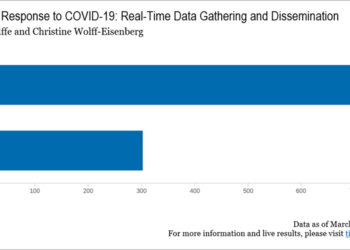Editor’s Note: Back in early 2020, we didn’t have a clear picture of how long the COVID pandemic would extend, disrupting our personal, business, and academic lives. As we head into the midst of what are likely to be some of the toughest few months yet as the virus spreads more rapidly and vaccine access remains limited at best, I’ve invited the Chefs to revisit their thoughts from earlier in the pandemic, now that we have a longer view of how things have gone and where they’re going. Today, Todd Carpenter talks about how volunteer-driven projects have been affected. Please share with us what has worked for you and what hasn’t in the comments section.
As the pandemic struck and people hunkered down and scrambled to retool their own businesses and services, those of us whose organizations rely on the efforts of volunteers were concerned. Of course, everyone was concerned about the virus and the potential economic impacts on organizations of all types as the economy ground to a halt. Layered over this general anxiety was the fact that so many community projects were driven by the leadership and contributions of volunteers. With organizations trimming back staff, or reallocating time and reprioritizing staff’s work, it would have made sense that volunteer work would have been the near the top of the list to go to the chopping blocks. Among the most gratifying takeaways from 2020 was how much volunteer work kept pace despite the pandemic.

The technical projects that make up the bulk of my organization’s (NISO’s) work had primarily moved virtual long ago. This positioned us to continue our work despite the lockdowns after the initial scramble as people adjusted to the ‘new normal’. Projects on Manuscript Exchange and on Reproducibility Badging and Definitions moved to publication, and several new initiatives were launched to revise Journal Articles Versions, Access and License Indicators, Indexes, and the DOI. The same could be said not only for NISO, but other established and newly forming organizations as well. Without missing a beat, organizations such as the Research Data Alliance, whose members turned aggressively toward advanced the sharing of COVID-related data, and FORCE11, which advanced Open Source, FAIR communities in Research Software, FAIR for Humanities and Cultural Heritage and Implementation of Software Citation. The Confederation of Open Access Repositories released the COAR Community Framework for Best Practices in Repositories. The Society for Scholarly Publishing and the International STM Association both maintained their educational programs, both of which rely on volunteer teams of event organizers. Meanwhile relatively new initiatives that had formed in the months prior to the pandemic outbreak began to take on more formal shape such as the Invest in Open Infrastructure, Project Reshare, OA Switchboard, and SeamlessAccess.
This is but a very short list of the great number of volunteer that were advancing this year. One could go on for pages and pages cataloging all of these efforts and their many successes this past year. In a year where it would not have surprised anyone if many of these efforts would have been shelved or withered, it is gratifying to see the many productive outputs in 2020 and the many new initiatives developing as a result. One might understandably look to the past year with despair, but if you look closely, there are many shoots that will likely flower this spring and summer.



